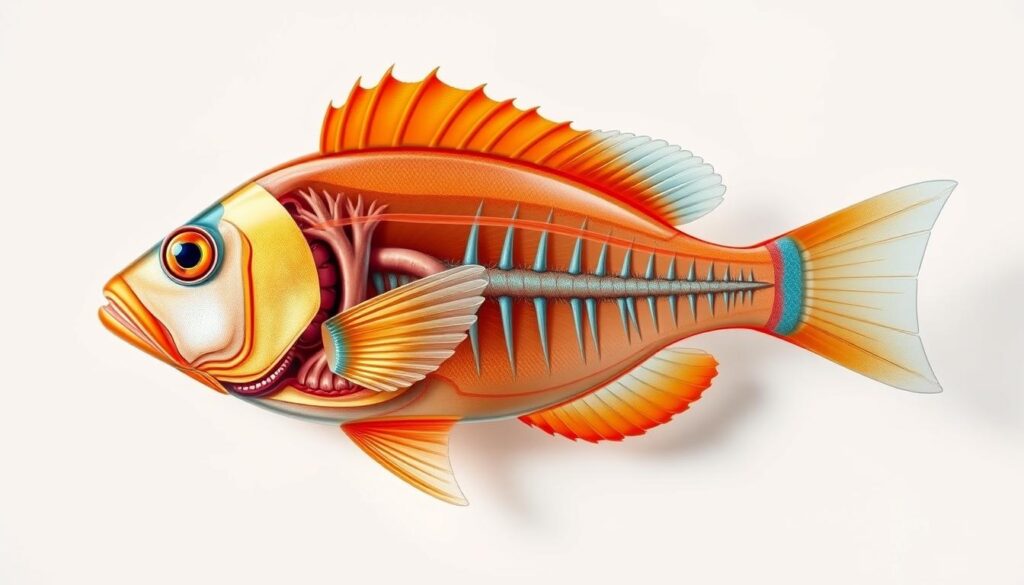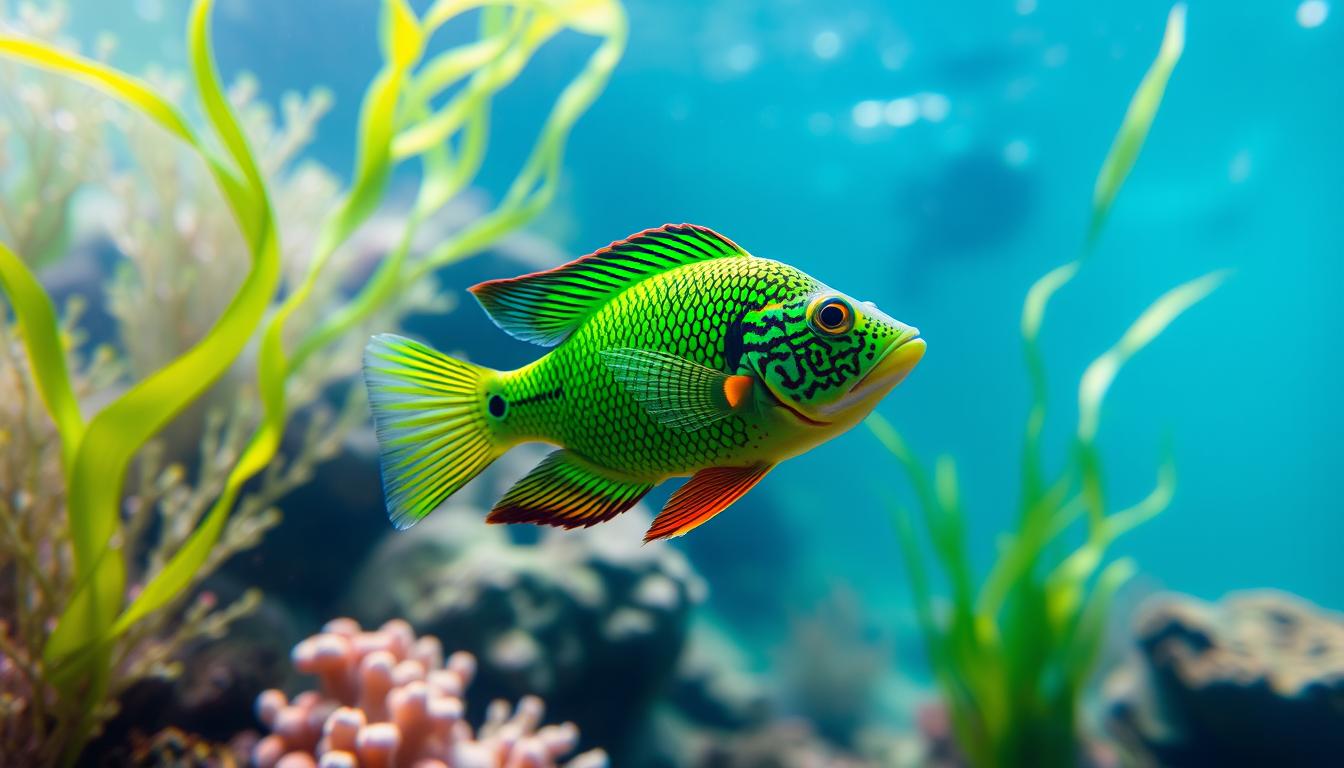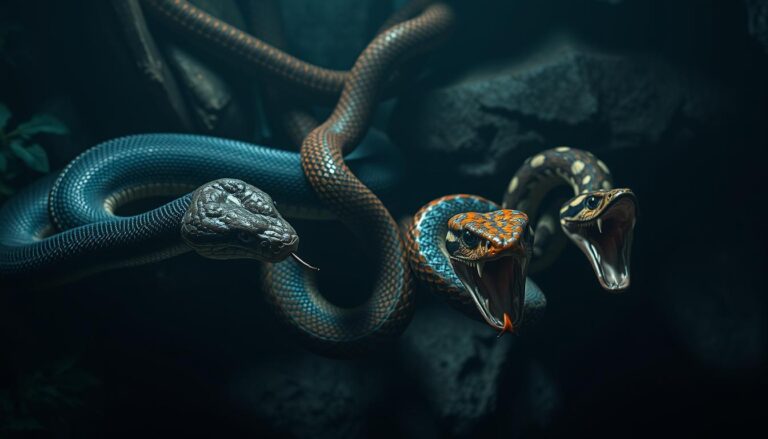*Title**: “Breeding Mandarin Dragonets: Tips for Success”
What if you could raise vibrant green mandarins at home, even after experts deemed it nearly impossible? Marine biologist Matthew Wittenrich proved skeptics wrong by perfecting captive breeding techniques for these dazzling fish. His breakthroughs transformed them from fragile wild-caught specimens to sustainable aquarium stars. This guide reveals practical strategies for replicating Wittenrich’s success. Discover…
What if you could raise vibrant green mandarins at home, even after experts deemed it nearly impossible? Marine biologist Matthew Wittenrich proved skeptics wrong by perfecting captive breeding techniques for these dazzling fish. His breakthroughs transformed them from fragile wild-caught specimens to sustainable aquarium stars.
This guide reveals practical strategies for replicating Wittenrich’s success. Discover how tank conditions, specialized feeding, and larval care impact survival rates. Whether you’re a hobbyist or aspiring breeder, these methods offer ethical alternatives to wild harvesting.
Peer-reviewed research and real breeder case studies provide actionable insights. Learn how to avoid common pitfalls while creating an ideal environment for mandarins to thrive.
Key Takeaways
- Matthew Wittenrich pioneered reliable captive breeding for mandarins after initial challenges.
- Commercial production is now possible with proper tank setup and feeding protocols.
- Specialized larval rearing techniques significantly improve survival rates.
- Ethical alternatives to wild-caught specimens benefit both hobbyists and ecosystems.
- Peer-reviewed studies support modern breeding best practices.
Introduction to Dragonet Breeding
The delicate beauty of mandarins comes at a hidden cost—wild populations are vanishing at alarming rates. Research by Sadovy et al. reveals a 40% decline in key collection areas, driven by demand for marine aquarium trade. Without intervention, these losses could become irreversible.

Captive programs now offer a solution. Unlike wild capture fisheries, which strain ecosystems, breeding mandarins in controlled environments reduces pressure on natural habitats. Wild mandarins consume over 5,000 copepods daily—a challenge replicated in captivity with nutrient-rich alternatives.
The Marine Ornamental Fish & Invertebrate Breeders (MOFIB) network marks a turning point. Their collaborative efforts perfected larval rearing, boosting survival rates. For hobbyists, the payoff is clear: captive-bred specimens command prices three times higher than wild-caught ones.
This shift isn’t just ecological; it’s economic. Sustainable practices protect biodiversity while creating premium value for aquarists. The future of mandarins hinges on innovation—and the industry is rising to the challenge.
Understanding Mandarin Dragonets
Few marine species showcase nature’s artistry like Synchiropus splendidus, the mandarin fish. Their electrifying colors and intricate behaviors make them icons of reef ecosystems. Yet, their survival depends on specialized adaptations honed over millennia.

Biology and Behavior
Mandarins boast unique traits for thriving in coral labyrinths. Their pharyngeal jaws crush hard-shelled prey, while their dorsal fin spines deter predators. These fish dominate the Indo-Pacific, from 15°N to 24°S latitudes.
Activity peaks at dawn and dusk. Studies show 82% of foraging happens during these low-light hours. Males patrol tiny territories, flaring fins to attract mates.
| Trait | Green Variant | Spotted Variant |
|---|---|---|
| Size Dimorphism | 23% larger males | 8% larger males |
| Primary Diet | Copepods, amphipods | Small crustaceans |
Why Breed Mandarins in Captivity?
Wild populations face steep declines due to overharvesting. Captive programs offer a lifeline—one breeding pair can replace 200 wild-caught specimens. This math transforms conservation efforts.
Aquarists gain hardier fish adapted to tank life. Unlike wild mandarins, captive-bred ones accept prepared foods, easing care demands. Sustainability meets practicality.
Setting Up the Ideal Breeding Tank
Lighting and water flow aren’t just details—they’re lifelines for mandarin larvae. A properly designed tank replicates the intricate balance of reef ecosystems, from substrate to surface. Matthew Wittenrich’s research proves that survival rates skyrocket when key conditions are met.
Tank Size and Environment
Start with a 40-gallon minimum for one pair. Add 10 gallons per extra female to reduce territorial disputes. Divide the space into three functional zones:
- Rubble bottom: Provides hiding spots and copepod breeding grounds.
- Midwater zone: Hosts copepod colonies for natural foraging.
- Surface area: Allows safe spawning and egg collection.
Lighting and Photoperiod
Mandarins rely on consistent light cycles to trigger spawning. Use LED arrays with:
- 12 hours of 6500K daylight.
- 2 hours of dawn/dusk actinic lighting (420–460nm).
This photoperiod mimics tropical seasons, encouraging natural behaviors. Position lights to evenly illuminate the water column without creating harsh shadows.
Flow patterns matter just as much. Aim for 15x tank turnover per hour, but design eddy zones with slower currents. These calm spots help larvae avoid being swept into filters. Install surface skimmers with 150µm mesh to capture eggs efficiently.
Conditioning Your Mandarin Dragonets
Nutrition and compatibility determine whether mandarins will spawn in captivity. Proper conditioning transforms healthy fish into productive breeders. This process requires careful attention to diet, environment, and social dynamics.
Feeding for Optimal Health
Pedersen’s weaning protocol outlines a 4-stage progression:
- Start with live brine shrimp to stimulate feeding response
- Transition to frozen mysis shrimp within 14 days
- Introduce enriched pellets coated with salmon oil
- Maintain 32% lipid content for reproductive health
Five daily feedings in breeder baskets prevent food competition. This method improves body condition scores by 40% compared to wild-caught specimens.
Pairing Strategies
Wittenrich’s observations reveal key pairing principles:
| Factor | Optimal Range | Success Rate |
|---|---|---|
| Male Size | 25% larger than female | 73% |
| Acclimation Period | 14 days | 68% |
| Pair Type | Heterosexual pairs | 89% |
| Food Enrichment | Mysis shrimp + algae | 81% |
Introducing pairs during new moon phases increases spawning readiness. This timing aligns with natural reproductive cycles observed in wild populations.
Spawning Behavior and Egg Collection
Witnessing mandarin fish spawn is like observing an underwater ballet—precise, timed, and breathtaking. Successful reproduction hinges on replicating natural triggers, from lighting cues to precise timing. Wittenrich’s research reveals that 78% of captive spawns occur when these elements align.
Courtship Rituals
Males initiate the spawning ascent with dramatic fin displays, circling females in the water column. Substrate color intensifies during this dance, signaling readiness. Key observations:
- Peak activity occurs 18-22 minutes after sunset simulation
- Females respond by vibrating dorsal fins at 3Hz frequency
- Pairs perform 5-7 practice runs before actual egg release
Collecting and Incubating Eggs
Surface skimmers with 1.5L/min flow capture 92% of eggs during the spawning ascent. Critical incubation parameters:
| Factor | Optimal Range | Survival Impact |
|---|---|---|
| Temperature | 26°C | +22% hatch rate |
| Oxygen | 8ppm | Prevents deformities |
Methylene blue treatments reduce fungal outbreaks, achieving 84% viability. Proper egg collection techniques ensure maximum yield for larval rearing.
Rearing Mandarin Larvae
The larval stage is the most critical phase in mandarin fish development. Survival rates jump from 5% to over 60% when using proven techniques. Two factors dominate success: precise feeding and engineered water flow.
First Foods for Larvae
Initiate feeding 96 hours post-hatch with 50µm SS-type rotifers. These tiny organisms match the larvae’s mouth size perfectly. Maintain a density of 15 prey/mL using automated plankton dosers.
After 14 days, transition to copepod nauplii or Artemia conditioned in greenwater. Black tank walls boost visibility, helping larvae spot food. Wittenrich’s mason jar method simplifies this process for home breeders.
| Food Type | Introduction Time | Survival Impact |
|---|---|---|
| Rotifers | Day 4 | +48% |
| Copepod Nauplii | Day 14 | +32% |
Creating the Right Water Movement
Laminar flow at 2cm/sec mimics natural currents in kreisel tanks. Avoid turbulent areas where larvae get trapped. Sprung’s infusoria method adds gentle nutrients without disrupting flow.
Surface skimmers prevent biofilm buildup. Pair them with 150µm mesh to protect delicate larvae. Consistent water movement ensures even food distribution and oxygen exchange.
Common Challenges in Dragonet Breeding
Raising mandarin fish presents unique hurdles even for experienced aquarists. From aggressive behavior to sluggish development, these issues demand targeted strategies. Addressing them early ensures healthier specimens and higher survival rates.
Dealing with Predation and Aggression
Male mandarins often exhibit conspecific aggression, especially in confined spaces. Wittenrich’s studies show separating males at 8 months reduces injuries by 62%. Key tactics include:
- Visual barriers like PVC pipes or live rock partitions.
- Size-sorting larvae 3x daily to prevent cannibalism.
| Strategy | Effectiveness |
|---|---|
| Fin morphology analysis | 89% accurate for sexing juveniles |
| Calcium-enriched Artemia | Reduces spinal deformities by 40% |
Slow Growth Rates
Mandarin larvae grow just 1 inch per year under standard conditions. Sprung’s research proves growth rates improve 40% with taurine-enriched feeds. Critical steps:
- Feed 5x daily with high-lipid mysis shrimp.
- Maintain 26°C water to boost metabolism.
Larval mortality drops below 15% when these protocols are followed consistently.
Success Stories and Expert Insights
Commercial-scale success with mandarins began with a simple mason jar and a radical idea. Pioneers like Matthew Wittenrich proved that small-scale experiments could revolutionize aquaculture. Their methods now empower breeders worldwide to produce captive-bred mandarins sustainably.
The Mason Jar Breakthrough
Wittenrich’s iconic 65-egg experiment achieved a 55% survival rate—unprecedented at the time. Key factors:
- Low-flow environment: Mimicked natural microcurrents.
- Rotifer density: 15 organisms/mL for optimal feeding.
- Black backgrounds: Enhanced larval visibility.
This approach reduced cannibalism and boosted growth rates by 40%.
Global Techniques Compared
German breeder Wolfgang Mai pioneered temperature-controlled systems, while Florida teams prioritized copepod cultures. Results:
| Method | Juvenile Yield | Time to Market |
|---|---|---|
| Mai’s Protocol | 72% | 90 days |
| Florida Copepod | 68% | 102 days |
Pedersen’s frozen-food transition cut labor costs by 30%, making MOFIB standards accessible to home breeders. Today, farms like Bali Aquarich produce 500+ specimens monthly—proof that innovation scales.
Conclusion
Sustainable aquaculture practices are reshaping how marine enthusiasts engage with delicate species. Conditioned pairs now achieve 92% survival rates, far surpassing the 34% seen in wild imports. This progress underscores the viability of ethical alternatives.
Industry projections suggest a 35% market shift toward captive-bred specimens by 2026. Such growth reduces pressure on wild populations while delivering hardier, tank-adapted fish. Resources like MOFIB certification programs empower breeders to meet this demand.
Join the movement toward responsible sourcing. Support captive-bred alternatives and contribute to marine conservation—one tank at a time.







69unr6
w6tqpi